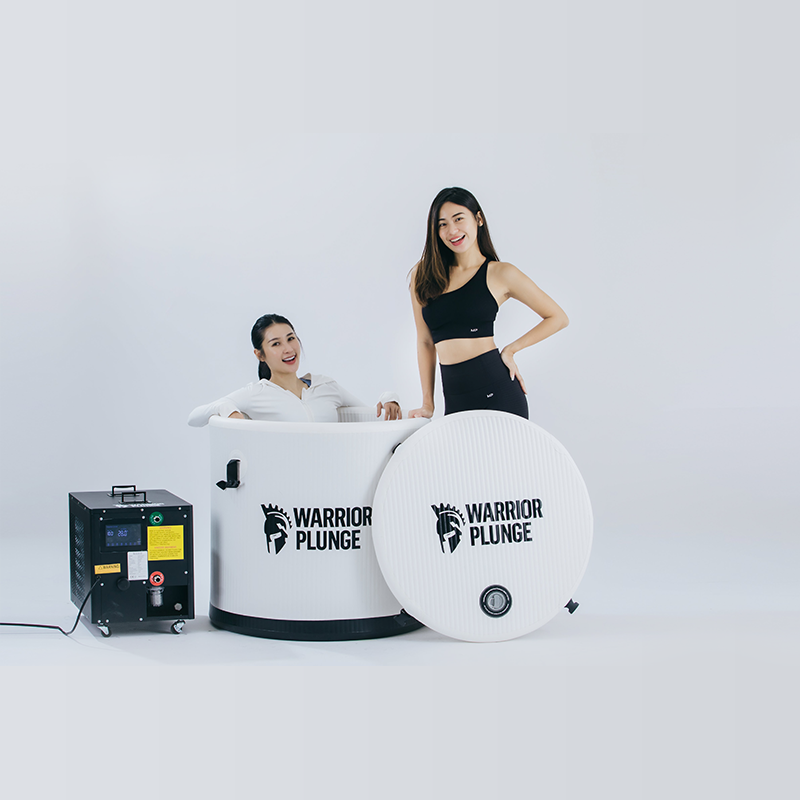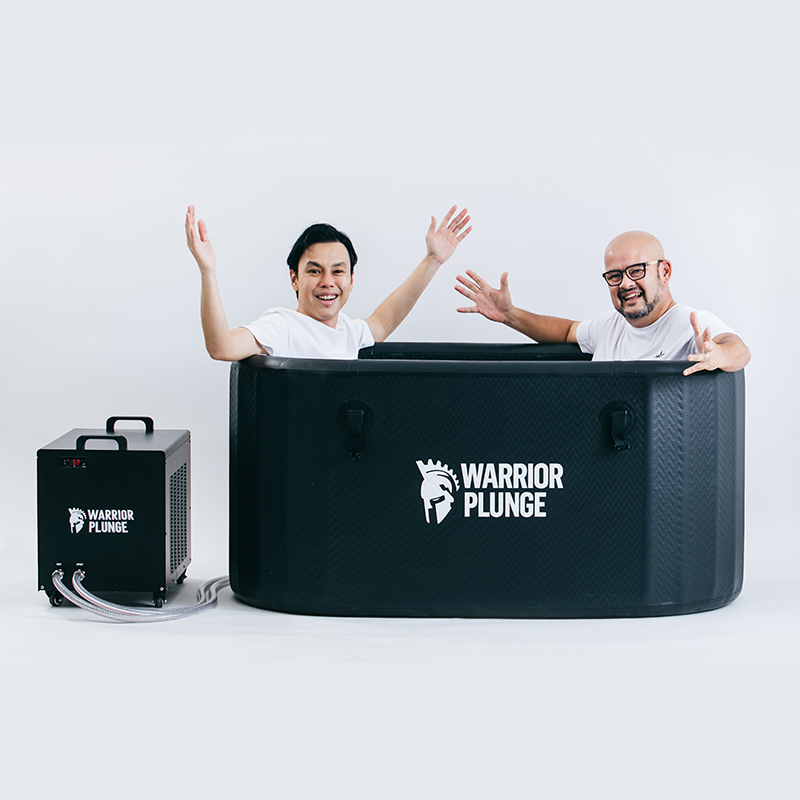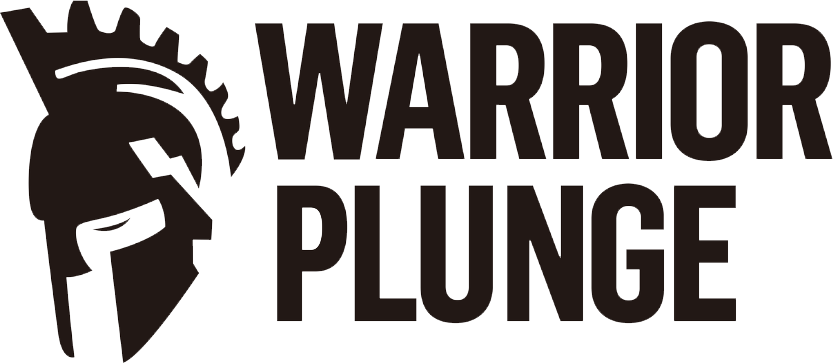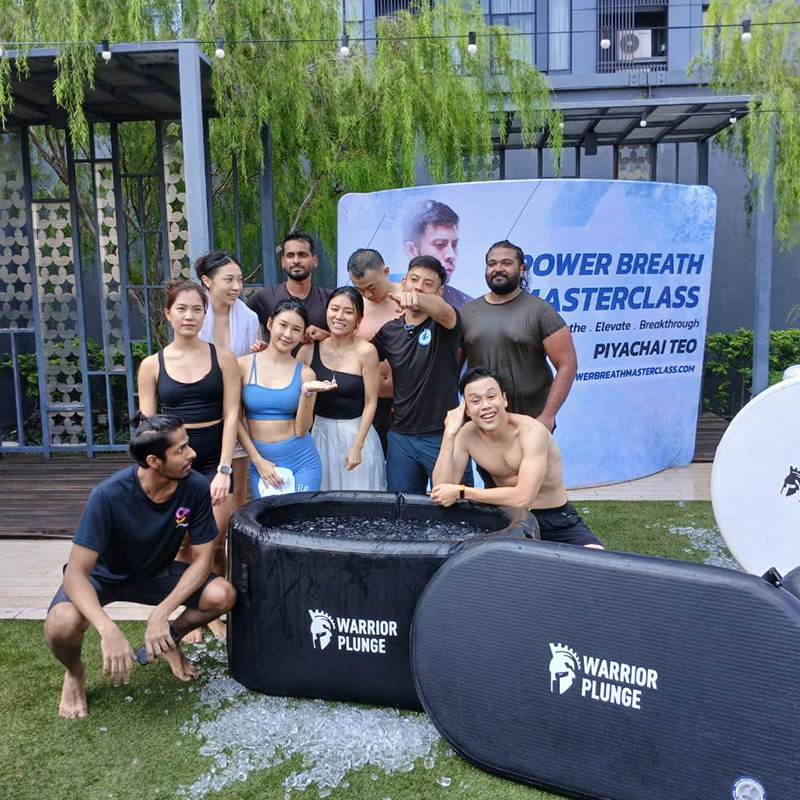Key Takeaways
- Biohacking definition: DIY approach to optimizing your biology through science-based lifestyle modifications
- Beginner-friendly start: Focus on sleep, nutrition, and light exposure before advancing to technology
- Measurable results: Track energy, focus, recovery, and sleep quality to validate improvements
- Safe progression: Start with low-risk interventions, avoid extreme DIY biology without expertise
- Evidence-based approach: Combine traditional wellness practices with modern technology and data tracking
- Cost-effective beginning: Many effective biohacks require minimal investment in expensive equipment
Introduction
Biohacking means taking control of your biology through small, intentional changes—optimizing diet, sleep, light exposure, and recovery to enhance performance, energy, and well-being. Dave Asprey, the father of biohacking, defines it as "the art and science of tweaking your environment to gain more control over your own biology."
This science-driven approach transforms you from passively following generic health advice into actively discovering what works for your unique biology.
This comprehensive guide covers beginner biohacking methods, essential tools, and practical strategies that deliver real results without extreme measures or significant investment. Read on to learn how to get you started!
What Is Biohacking & How Does It Work?
Definition & Core Principles
Biohacking (also called "DIY biology") represents a systematic approach to optimizing human performance through lifestyle modifications, technology integration, and data-driven experimentation. Unlike traditional wellness approaches that rely on general recommendations, biohacking emphasizes personalization and measurable outcomes.
At its core, biohacking involves:
- Modifying inputs: Diet, sleep, exercise, light exposure, supplements
- Measuring outputs: Energy levels, cognitive function, recovery metrics, mood
- Iterating based on data: Adjusting strategies based on measurable results
- Personalizing approaches: Recognizing that optimal strategies vary between individuals
How Biohacking Works
The beauty of biohacking lies in its systematic methodology. The biohacking process follows a simple yet powerful framework:
- Establish baseline measurements of current performance metrics
- Implement targeted interventions based on scientific evidence
- Track changes using objective and subjective measures
- Analyze results to determine effectiveness
- Refine and optimize protocols based on findings
This cyclical approach ensures continuous improvement while preventing you from wasting time on ineffective strategies.
Scientific Foundation
Modern biohacking isn't based on trends or pseudoscience—it combines ancient wellness practices with cutting-edge research in:
- Circadian biology: Optimizing sleep-wake cycles and hormone production
- Nutritional science: Personalizing diet based on genetics and metabolism
- Exercise physiology: Maximizing training adaptations and recovery
- Neuroscience: Enhancing cognitive function and stress resilience
Major Categories
Understanding the main categories of biohacking helps you choose where to focus your efforts:
- Nutrigenomics: Tailoring nutrition and supplementation based on genetic profiles and metabolic responses
- Lifestyle Optimization: Modifying sleep, stress management, and environmental factors for enhanced performance
- Technology Integration: Using wearables, apps, and devices to track and optimize biological functions
- Recovery Enhancement: Implementing advanced recovery modalities like cold therapy, red light therapy, and targeted supplementation
Source: Varsha Sorout and Kakoli Dutt. Diy Biology and Biohacking: A New Research Journey. Journal Of Case Reports: Clinical & Medical. 2020; 3(2):150
Now that you understand the foundation, let's explore specific biohacking methods you can implement immediately.
Biohacking Types & Beginner-Friendly Methods

1. Nutritional Biohacking
Nutrition forms the foundation of effective biohacking since food directly impacts energy, cognition, and recovery. However, nutritional biohacking goes beyond basic healthy eating—it focuses on personalized optimization based on your individual responses.
Foundation Strategies:
- Elimination diets: Identify food sensitivities affecting energy and cognition
- Meal timing optimization: Strategic eating windows to support circadian rhythms
- Macronutrient ratios: Personalizing protein, fat, and carbohydrate intake
- Hydration protocols: Optimizing water intake and electrolyte balance
Popular Approaches:
Building on these foundations, advanced nutritional biohacking includes:
- Intermittent fasting: 16:8 or 18:6 eating windows to improve metabolic flexibility
- Ketogenic cycling: Alternating between ketosis and carb-refeed periods
- Anti-inflammatory diets: Emphasizing foods that reduce systemic inflammation
- Biohacking drinks: Bulletproof coffee, adaptogenic teas, electrolyte optimization
Beginner Implementation:
To get started with nutritional biohacking without overwhelming yourself:
- Start with a 12-hour eating window and gradually extend
- Add healthy fats (MCT oil, grass-fed butter) to morning coffee
- Track energy levels and cognitive function throughout dietary changes
- Introduce one new supplement at a time to assess individual effects
2. Fitness & Recovery Biohacking
While nutrition provides the fuel, optimized exercise and recovery protocols accelerate your biohacking results. This category focuses on maximizing training adaptations while minimizing recovery time.
Exercise Optimization:
- Zone 2 cardio: Low-intensity training for metabolic health and fat oxidation
- High-intensity intervals: Brief, intense efforts to improve VO2 max and hormonal response
- Strength training protocols: Compound movements with progressive overload
- Movement quality: Mobility work and functional movement patterns
Advanced Recovery Methods:
Recovery becomes even more critical as you optimize your training. Advanced recovery methods include:
- Cold exposure therapy: Ice baths and cold plunges for inflammation reduction and resilience building
- Heat therapy: Sauna sessions for cardiovascular health and stress adaptation
- Contrast therapy: Alternating hot and cold exposure for enhanced circulation
- Red light therapy: Near-infrared light for cellular energy and tissue repair
For busy professionals who can only train on weekends, these biohacking principles become even more critical. Learn how to maximize limited training time with our complete Weekend Warrior guide to lifestyle, workouts & recovery.
Recovery Tools Integration:
Modern recovery extends beyond traditional methods to include:
- Compression therapy: Pneumatic compression for lymphatic drainage
- Vibration therapy: Whole-body vibration for muscle activation and recovery
- Sleep optimization: Creating optimal sleep environments and routines
- Heart rate variability training: Breathing exercises and stress management
3. Technology & Wearable Integration
Technology transforms biohacking from guesswork into precision optimization. However, the key is choosing the right metrics and using data effectively rather than becoming overwhelmed by information.
Essential Monitoring Devices:
- Sleep trackers: Oura Ring, WHOOP, or Eight Sleep for sleep quality assessment
- Heart rate monitors: Continuous monitoring for training and recovery optimization
- Continuous glucose monitors: Real-time blood sugar tracking for metabolic insights
- HRV monitors: Heart rate variability for autonomic nervous system assessment
Data Analysis & Application:
Collecting data is only valuable if you can translate it into actionable insights:
- Baseline establishment: Track metrics for 2-4 weeks before implementing changes
- Correlation identification: Connect lifestyle factors with performance outcomes
- Trend analysis: Look for patterns over weeks and months, not daily fluctuations
- Actionable insights: Use data to guide specific interventions and modifications
Beginner-Friendly Options:
You don't need expensive equipment to start tracking effectively:
- Start with smartphone apps for basic sleep and activity tracking
- Gradually invest in dedicated devices as you identify key metrics
- Focus on 2-3 primary metrics initially to avoid data overwhelm
- Establish consistent measurement protocols for reliable comparisons
4. Mental Performance & Cognitive Enhancement
Mental optimization often provides the most immediate and noticeable biohacking benefits. This category focuses on enhancing focus, memory, stress resilience, and overall cognitive function.
Nootropics & Cognitive Support:
Nootropics, often called "smart drugs," are diverse compounds designed to boost human thinking, learning, and memory. They're especially helpful when these mental functions aren't at their best.
Natural Nootropic Strategies:
- Natural combinations: Caffeine + L-theanine for focus without jitters
- Adaptogenic herbs: Rhodiola, ashwagandha for stress resilience
- Omega-3 optimization: High-quality fish oil or algae oil for brain health
- B-vitamin complexes: Supporting neurotransmitter production and energy metabolism
Cognitive Training Methods:
Beyond supplementation, cognitive training builds long-term mental resilience:
- Meditation practices: Mindfulness, focused attention, loving-kindness meditation
- Breathwork techniques: Box breathing, Wim Hof method, coherent breathing
- Cold exposure: Building mental resilience through controlled stress
- Learning protocols: Spaced repetition, deliberate practice, cross-training
Mental Performance Tools:
Technology can support your cognitive enhancement efforts:
- Meditation apps: Headspace, Calm, or Insight Timer for guided practice
- Brain training: Dual N-Back, working memory exercises
- Environmental optimization: Lighting, temperature, and sound control
- Social biohacking: Optimizing relationships and community connections
5. Biohacking for Women
Women's biohacking requires specialized considerations due to hormonal fluctuations, metabolic differences, and unique health challenges. This emerging field focuses on optimizing health throughout different life phases and menstrual cycles.
Hormonal Optimization:
Understanding and working with natural hormonal patterns amplifies biohacking effectiveness:
- Cycle tracking: Understanding menstrual phases for training and nutrition timing
- Seed cycling: Using specific seeds to support hormonal balance naturally
- Light therapy: Morning light exposure and evening blue light reduction
- Stress management: Cortisol regulation through lifestyle modifications
Female-Specific Considerations:
Women often have different nutritional and health requirements that require targeted approaches:
- Iron status monitoring: Addressing deficiency common in women
- Bone health support: Vitamin D, K2, magnesium for long-term skeletal health
- Thyroid optimization: Supporting thyroid function through nutrition and lifestyle
- Pregnancy and fertility: Specialized protocols for reproductive health
With these foundational concepts established, let's address common questions beginners have about starting their biohacking journey.
Common Biohacking Questions
What is a biohacking routine?
A biohacking routine is a structured approach to self-experimentation that involves: (1) tracking baseline metrics, (2) implementing 2-3 targeted interventions, (3) monitoring results for 4-6 weeks, and (4) analyzing data and adjusting protocols accordingly.
How to start biohacking for beginners?
The most effective approach is to begin with foundational elements and build gradually:
- Week 1: Optimize sleep schedule and morning light exposure
- Week 2: Add hydration protocol and basic supplementation
- Week 3: Introduce movement practices and stress management
- Week 4: Add one advanced tool (wearable, cold exposure, etc.)
What is the best biohack?
The "best" biohack depends on your primary goal, but some universally effective starting points include:
- Sleep quality: Light exposure optimization and sleep environment control
- Mental focus: Caffeine + L-theanine combination and meditation practice
- Physical recovery: Cold plunge therapy and contrast protocols
- Energy levels: Circadian rhythm alignment and metabolic flexibility training
What is a biohacking diet?
A biohacking diet is personalized nutrition based on individual responses rather than one-size-fits-all approaches. Common elements include elimination protocols, meal timing optimization, anti-inflammatory foods, and targeted supplementation based on deficiencies or goals.
Which biohacking supplements should beginners try?
Start with evidence-based basics before moving to advanced compounds:
- Vitamin D3 + K2: For immune function and bone health
- Omega-3 fatty acids: For brain health and inflammation reduction
- Magnesium glycinate: For sleep quality and muscle recovery
- High-quality multivitamin: To cover nutritional gaps
What are popular biohacking drinks?
Functional beverages offer targeted benefits for specific outcomes:
- Bulletproof coffee: MCT oil + grass-fed butter for sustained energy
- Green tea: L-theanine + caffeine for calm focus
- Electrolyte drinks: Optimized sodium, potassium, magnesium ratios
- Adaptogenic teas: Herbs like rhodiola and ashwagandha for stress resilience
Is biohacking safe?
Most lifestyle-based biohacks are low-risk, but safety depends on the specific intervention. Nutritional changes, sleep optimization, and basic supplementation are generally safe. However, extreme DIY biology, unregulated supplements, or implants carry higher risks and should involve medical supervision.
Now that we've covered the fundamentals, let's create a practical implementation plan you can start immediately.
Getting Started: Your 4-Week Biohacking Plan
Starting your biohacking journey can feel overwhelming with so many options available. This structured 4-week plan removes the guesswork by providing a proven progression that builds sustainable habits while delivering measurable results.

Week 1: Baseline Establishment & Foundation
The first week focuses on measurement and basic optimization without overwhelming changes.
Measurement Setup:
- Install a sleep tracking app or wearable device
- Begin daily energy and mood ratings (1-10 scale)
- Take baseline measurements (weight, blood pressure, resting heart rate)
- Consider basic blood work (complete metabolic panel, vitamin D, B12)
Initial Interventions:
Rather than making dramatic changes, start with these fundamental optimizations:
- Sleep optimization: Consistent sleep/wake times, dark sleeping environment
- Morning routine: 10-15 minutes outdoor light exposure upon waking
- Hydration protocol: 16-20oz water upon waking, 8-10 glasses throughout day
- Digital sunset: Blue light reduction 2 hours before bedtime
Week 2: Nutritional Foundation & Movement
Building on week one's foundation, week two introduces nutritional and movement optimization.
Dietary & Fitness Protocol:
- Anti-inflammatory nutrition: Increase vegetables and healthy fats, reduce processed foods
- 12-hour eating window: Establish consistent meal timing with 0.8-1g protein per pound bodyweight
- Zone 2 cardio: 2-3 sessions of 20-30 minutes at conversational pace (nasal breathing)
- Strength foundation: 2x weekly bodyweight exercises (squats, push-ups, planks)
- Daily mobility: 10-15 minute morning routine or evening walk
Basic Supplementation:
Introduce foundational supplements one at a time to assess individual effects:
- Vitamin D3: 2000-4000 IU daily
- Omega-3: Quality fish/algae oil
- Magnesium: 200-400mg before bed
Week 3: Recovery Hacks & Mental Performance
Week three introduces more advanced techniques as your foundation strengthens.
Recovery Enhancement:
- Cold exposure: Start with 30-second cold showers, progress to 2-3 minutes
- Heat therapy: Sauna sessions or hot baths 2-3 times weekly
- Movement practice: Daily 10-15 minute mobility or stretching routine
- Stress management: Begin 5-10 minute daily meditation practice
Cognitive Optimization:
Enhance mental performance through targeted interventions:
- Nootropic trial: Caffeine + L-theanine combination (100mg each)
- Breathwork: 5-minute box breathing or 4-7-8 breathing before bed
- Learning protocol: Implement spaced repetition for skill development
- Environmental control: Optimize workspace lighting and temperature
Week 4: Optimization & Advanced Integration
The final week focuses on data analysis and integration of advanced tools.
Data Analysis:
- Review tracking data: Identify patterns between interventions and outcomes
- Correlation mapping: Connect specific practices with measurable improvements
- Protocol refinement: Adjust timing, dosages, or methods based on results
- Goal reassessment: Determine which areas need continued focus
Advanced Tool Integration:
Based on your progress and interests, consider adding:
- Wearable upgrade: Consider investing in dedicated tracking device
- Recovery modality: Add one advanced tool (red light therapy, compression)
- Social optimization: Evaluate and improve social connections and support
- Long-term planning: Develop sustainable practices for continued optimization
With your foundation established, let's explore the equipment that can accelerate your progress.
What Equipment Do I Need For Biohacking Recovery?
While many biohacking methods require minimal equipment, certain professional-grade tools can significantly accelerate your progress, particularly for thermal therapy protocols that form a cornerstone of advanced recovery.
Warrior Plunge Cold & Hot Therapy Systems
Professional thermal therapy systems offer consistent, safe, and effective recovery modalities that surpass DIY alternatives.
System Options & Advantages:
- Cold plunge tubs: Precision-controlled ice baths with energy-efficient chillers
- Sauna systems: Traditional and infrared options for optimal heat therapy
- Contrast therapy bundles: Combined hot/cold systems for maximum recovery benefits
- Portable solutions: Easy home setup without permanent installation requirements
Professional Features:
What sets professional systems apart from consumer alternatives:
- Safety features: Built-in monitoring, emergency protocols, and guided safety instructions
- Military-grade durability: Professional construction for reliable long-term use
- Professional installations: Permanent systems with advanced features and monitoring
- Beginner packages: Guided protocols and community support for safe introduction
Integrated Recovery Protocols:
Maximize your investment by implementing structured protocols:
- Morning routine: Light exposure → cold plunge → movement practice
- Evening protocol: Heat therapy → meditation → sleep optimization
- Post-workout: Cold immersion → targeted nutrition → rest optimization
Understanding the benefits and risks of thermal therapy helps you make informed decisions about incorporating these powerful tools.
Hot & Cold Therapy: Proven Benefits for Recovery
Research demonstrates that thermal therapy delivers comprehensive improvements across physical, mental, and metabolic health:
Key Benefits:
- Physical: Enhanced recovery, reduced inflammation, improved strength and sleep quality
- Mental: Sharper focus, better stress resilience, mood enhancement, and memory consolidation
- Metabolic: Improved insulin sensitivity, enhanced fat burning, and optimized hormone production
How It Works:
Cold exposure
Triggers vasoconstriction then vasodilation, reducing inflammation markers (IL-6, TNF-α*) while releasing dopamine for mental resilience and faster muscle recovery.
*IL-6 (Interleukin-6) and TNF-α (Tumor Necrosis Factor-alpha) are proteins that increase during inflammation and muscle stress
Heat therapy
Mimics moderate exercise effects, improving cardiovascular health while activating the parasympathetic nervous system for deep relaxation and stress reduction.
Contrast therapy
Alternating hot-cold cycles creates powerful vascular pumping effects that address both inflammation and muscle tension simultaneously—delivering maximum benefits in shorter sessions than single-temperature therapy.
Read more about Contrast Therapy: Benefits, How It Works & How To Do Guide
Weekend warriors who compress intense training into 1-2 days especially benefit from advanced recovery protocols. Discover specific strategies in our complete Weekend Warrior guide.
With this understanding of thermal therapy benefits, you're equipped to make informed decisions about your biohacking journey.
Next Step: Start Your Biohacking Journey Now
Biohacking represents the democratization of human optimization, putting the tools and knowledge once reserved for elite athletes and researchers into your hands. The key to success lies not in extreme measures but in consistent, evidence-based interventions tailored to your unique biology and goals.
Success Principles
- Start with foundations before adding advanced tools
- Track consistently to identify what actually works for you
- Progress gradually to avoid overwhelm and ensure safety
- Stay curious but maintain healthy skepticism about extreme claims
Your optimized self is waiting. Start with one small change today, measure the results, and build from there. The science of human optimization is at your fingertips—use it wisely.
Ready to accelerate your biohacking journey with professional-grade tools? Warrior Plunge's precision-controlled hot and cold therapy systems provide the foundation for advanced recovery protocols, while our comprehensive guides help you integrate these tools safely and effectively. Contact us today!
Read more

Ice bath for face benefits: Reduce puffiness, tighten pores, boost mood & improve sleep in 30 seconds. Complete guide with safety tips & protocols.

Epsom salt ice bath guide: Enhanced recovery with 250-300g salt at 10-15°C. Benefits, safety tips, and step-by-step protocols for optimal results.





